Christopher Hector sits in on a clinic with George Morris
Photos – Sharlene Phillips
Even in his (very early) eighties, showjumping legend George Morris shows no signs of slowing down. He’s up on one of his pupil’s horses, teaching it flying changes. As he gets off, the rider starts to tell George about the horse, he stops her: “I know more about the horse than you…”
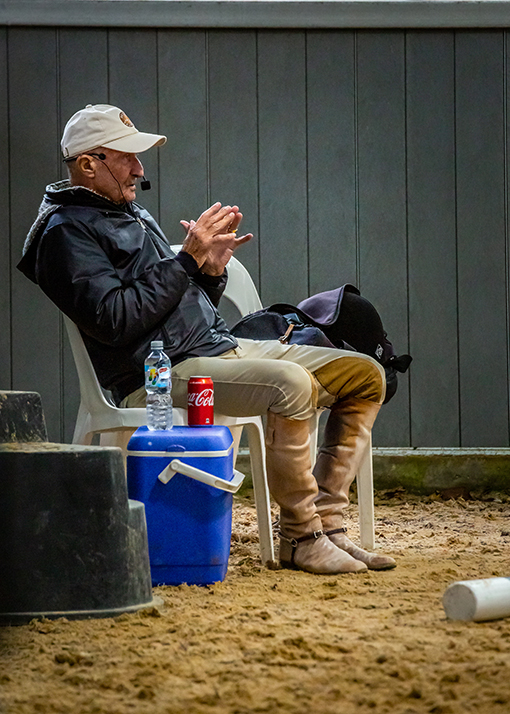
In a world where the simplest snaffle is god, George is not afraid to advocate a twisted wire: “He just runs through the hand with that rubber straight bar bit of yours…” And George insists that a twisted wire be found so the rider can feel what he is talking about.
“How’s the bit? You hate it, at home it’s my favorite bit, the twisted snaffle, that’s for home. At the competition use the bit that works for you.”
And what is he talking about? His message is that less is more.
“Relax your hand, wait for your horse. Do nothing. And don’t do too much with your upper body, not in front or behind, the movement. If the horse hesitates, you have a cluck, a spur, a stick, but you don’t move with your upper body. There shouldn’t ever be a hint of the rider jumping for the horse. Hold the forward jumping position to the fence, don’t sit up when you get to the fence. It is such a bad habit, you get to the take off and go ahead of the pommel.”
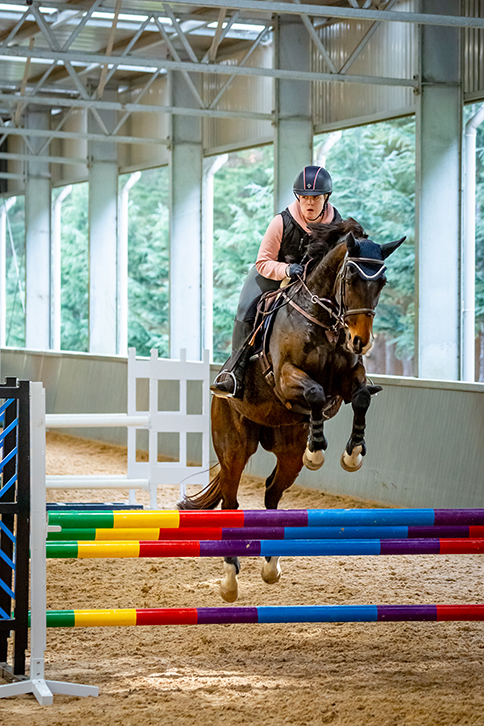
“It’s also an old habit to lean back after the fence – stay forward with the horse after the fence. When you sit up after the jump, you hit the horse in the back, and that makes the horse quick and hollow.”
“Lots of riders have been indoctrinated with the dealer seat, the butt grabber seat, sitting in the back of the saddle, in the back of the horse. It’s the fashion for horse dealers with green horses, they have to ride behind them all the time, we don’t have to ride behind. I hate that back-of-th- saddle seat – legs not seat, teach your horse to carry you.”
story continues below
“DO NOTHING but relax your hand. You have to have sufficient contact so that you can give with your hands. Focus on your upper body, there must be no excess movement of your upper body. The rider needs to be active, not rough, mentally active, don’t just get taken for a ride, orchestrate the ride.”
As always with George, it starts with the basics, it starts with the flatwork…
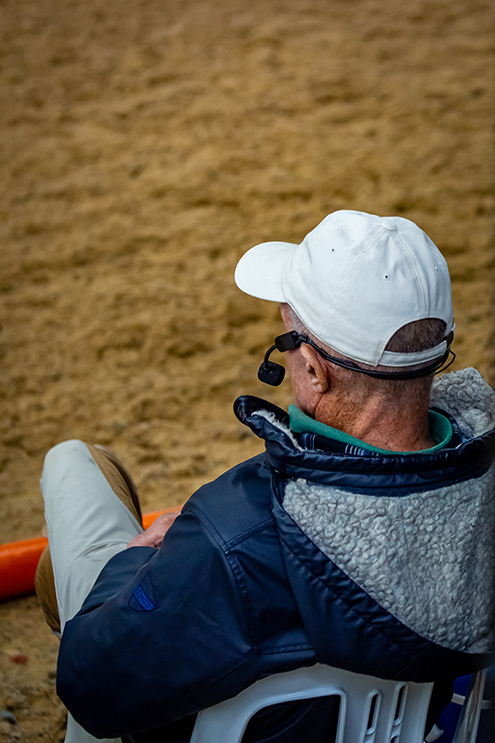
“Your teachers have to understand the principle that the rising trot is exactly the same as jumping. The problem is that lots of teachers don’t understand the craft of jumping, they don’t understand the mechanics. The rising trot is just the same as jumping, that’s why we do rising trot in a forward position. The thrust of the horse throws the seat and upper body out of the saddle, I do nothing. Work on position and form, people, position and form.”
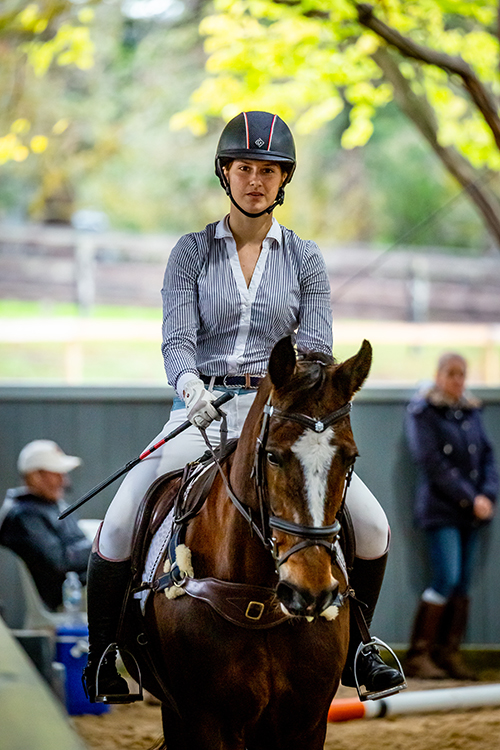
“I have a system to find the right distance. Watch the top rail, follow the horse to the fence, let go, and wait. I place the horse short or long, where-ever I want and wait.”
George is well aware that while the very top riders in Sydney (who just happen to be the top riders in Australia) beg for places in his clinics, mediocre Victorian riders don’t think they need help.
“If I irritate you, I do it on purpose to get progress. I don’t irritate by accident, I come to Melbourne to get you out of your stupor.”
Right from the first clinic I saw George conduct twenty years ago, the rider is instructed to use a barrier to help lighten the stop:
“What is a stopping aid? A fence, a tree, a fancy car. I love galloping at those Bentleys and Rolls Royce they have in Wellington and using them to stop my horse. Steer at the fence, make him light to your hand. Always add your voice to the stop in front of the wall, whoa, so there is an association between the voice and the halt. When the horse stops, wait six seconds to teach him immobility. Turning to a fence (barrier) is a great exercise and it saves the horse’s mouth.”
“For discipline, park your horse in the corner after the last jump.”
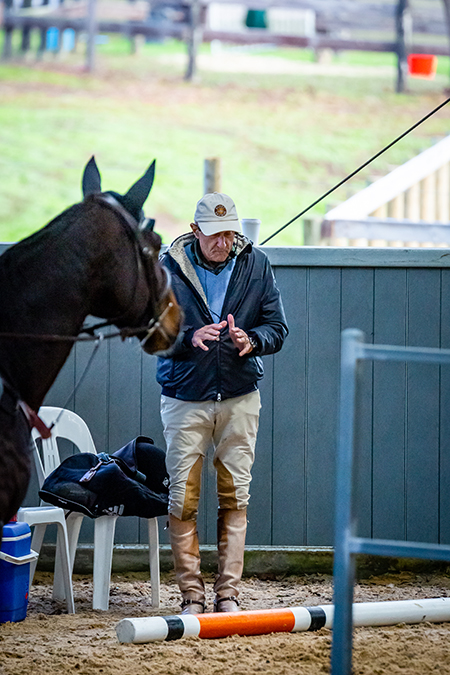
Still the less is more message resonates…
“Let go, let go, leg go. You are so controlling. GIVE with the hands. If you are tight in your arms, if you clutch with tight arms, you won’t see the distance.”
“Look for the distance, if it is a nice distance go forward, if you don’t see that nice distance, wait for the short stride. If in doubt, wait it out. What I have to do is help the rider get a sense of timing. It took me twenty years to see a distance, I don’t know how I survived, I had very good horses.”
story continues below the advertisement
And it wouldn’t be a training session with George without reference to the rider’s heels. “Put some weight in your heels, bring your legs forward they are too far back. The reason your stirrup slips is that all your weight is in the seat and there’s very little in your feet. My stirrup does not slip, my heel stays down, weight in the heel, and the stirrup in place.”
“If your horse is sensitive to the leg, then teach them to accept leg in the flatwork, when we jump, we have passive legs. Some horses have so much impulsion the rider doesn’t have to use legs. Once a hot horse learns to tolerate the leg, he is not hot, once a cold horse learns to tolerate the leg, he is not cold.”
“When a horse is tense and won’t accept the leg, make a little circle, haunches in, haunches out. You must never be rough, definite, YES. There are three things you have to think about, light to the leg, light to the hand, then the seat will take care of itself. It is a simple sport, but not an easy sport.”
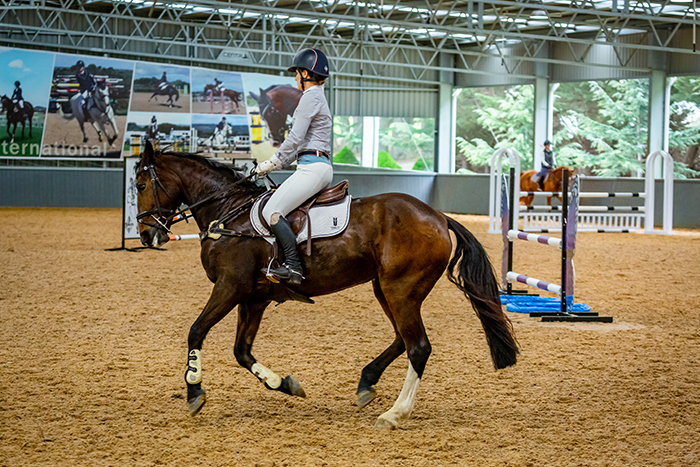
“The rider should not be rough, but actively participating. I don’t care if you go for a short or a long distance, but you need to be definite, not tentative. Don’t ever tap or kick with your legs, legs squeeze – if that is not enough, you have the whip and the spur.”
George’s autobiography is called Unrelenting and that pretty much sums up his teaching style:
“That’s not right, do it again. Do it again. Go back up the line, don’t get complacent, watch for the distance, watch for the distance, take your time. Don’t practice helpless, don’t be pathetic, it is so easy if you are thinking. Repetition, practice, work, work. People is that difficult? NO, it is easy if you are thinking. You have to practice precision.”
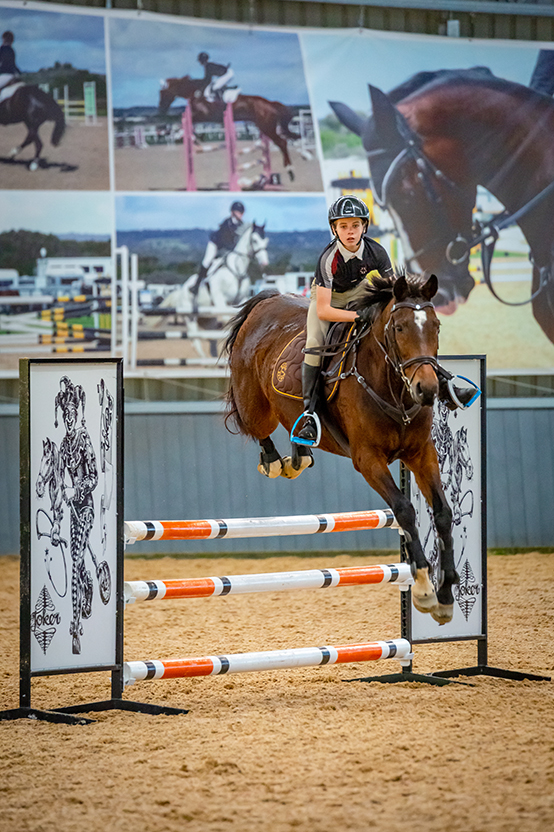
“Don’t rush, take your time, eyeball the fence. Don’t rush, be accurate, take your time to be accurate. This sport takes time, you have to think about it, read about it, watch – be sharp.”
“I know you don’t like pressure – you don’t like me, but I am not going to change because I have great results with pressure. You have to be out of your comfort zone when you are being instructed, to succeed.”
“When there’s difficulties, don’t fold like a tent, when you have adversity you fold. When it gets tough, you have to fight. I like adversity because adversity makes us stronger.
“You jump a horse and you school a horse, they are not two separate entities. The top dressage riders of the old school used to shorten their stirrups and jump up to a metre once a week, that is forgotten now. The big boys after they finish jumping a round, they school their horse in the arena, they don’t just go back to their friends.”
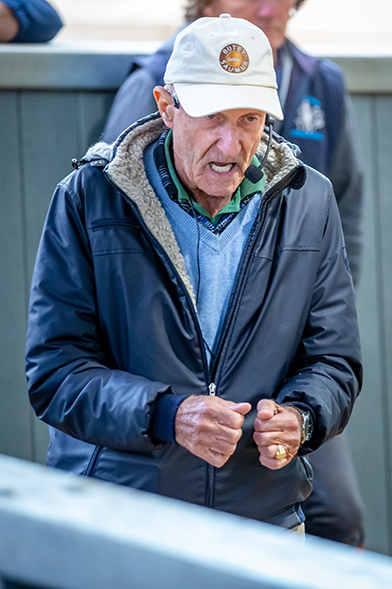
“You are either schooling a horse, or un-schooling your horse. I don’t care how strong you are to get the stop, but no temper and don’t clash the aids by raising your heel in the stop. Co-ordinate the aids, never clashing aids.”
“The circle is the most fundamental exercise of equitation, the shoulder in is also fundamental, and they are very close together. Put together shoulder in and the circle and you get submission and collection.”
One of the horses that George went to ride ducked out from under him as he went to get on, and its own rider had to take it out of the arena to get on herself, it was something George knew all about.
“With my best horse Rio, I never worried about the fences, he could jump anything, I lay awake at night, worrying where I would get on him. There were tool sheds in Hickstead, alley ways in Aachen, that was my worry, finding somewhere to get on the horse.”
See he is human after all…
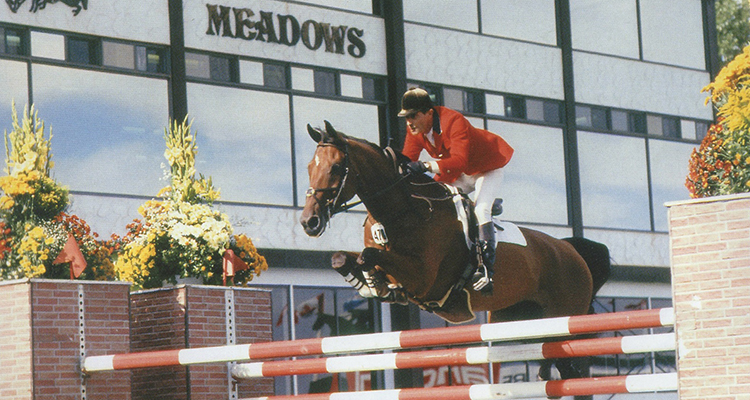
George and Rio at Spruce Meadows – the hard part was getting on him…
| Sharlene Phillips Owner, Artist & Professional Photographer |
|
| OneEyedFrog Photography Professional Equine Portraiture & Equestrian Event Photography, Sports & Action Photography, Commercial & Product Photography, Family Portraits, Fine Art Photography, Headshots, Macro Photography, Pet & Reptile Portraiture. Pet & Portrait Drawings available on Request m: +61420891067 e: Admin@oneeyedfrog.net |
|
| www.oneeyedfrog.com.au | |

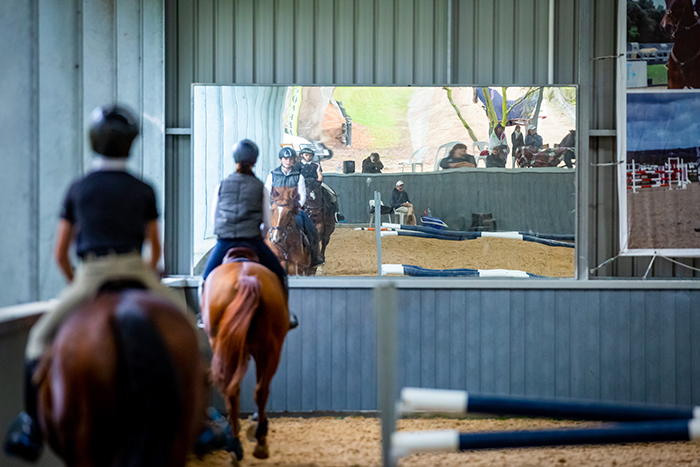
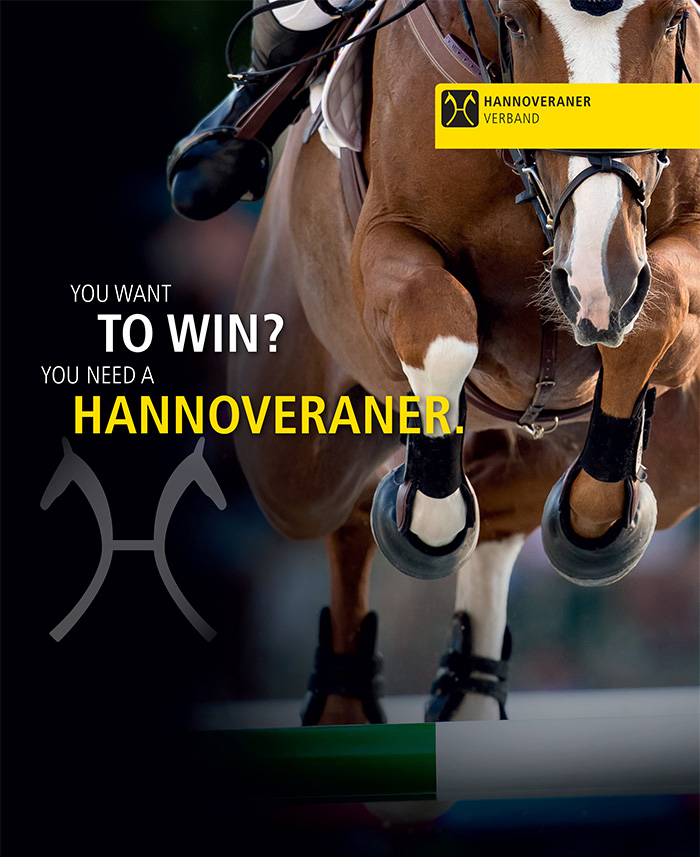
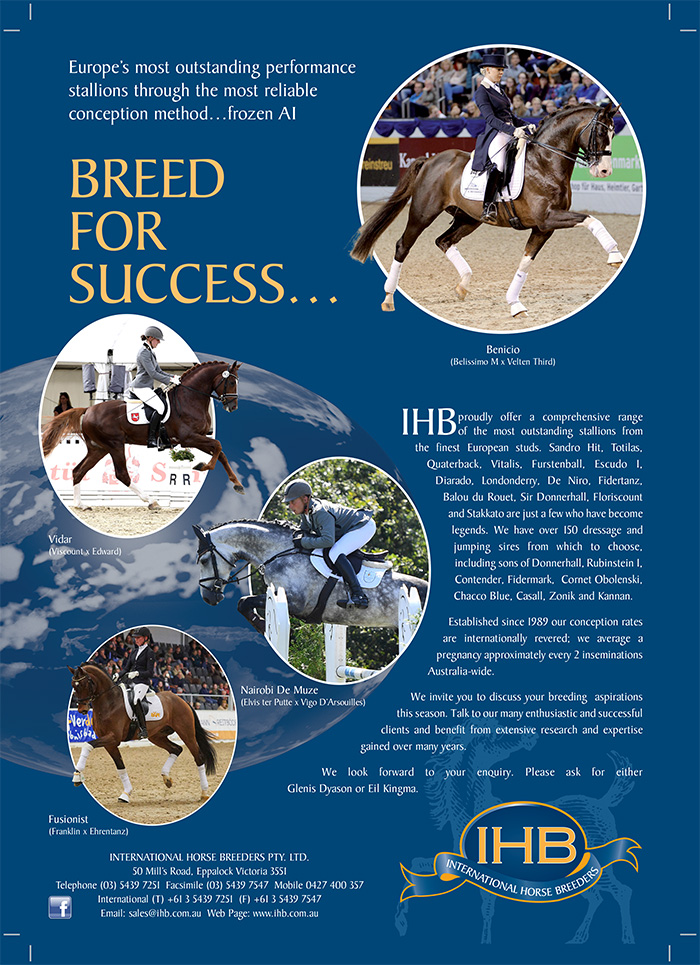
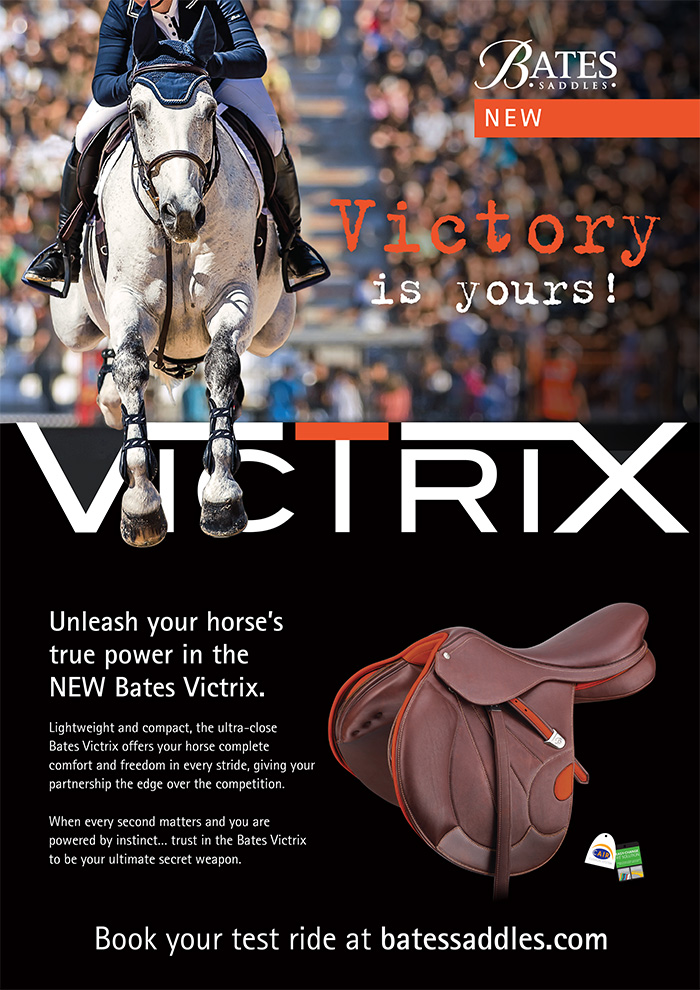
I am older person and watched the middle group all 3 days, saw much improvement on all the combinations of horse and riders! It’s hard when a person is riding in a clinic, trying out what George is telling you. I just hope the riders take on board what he was saying! I would love to have another go!! He may be an old master but he still knows what he is saying is correct!